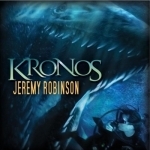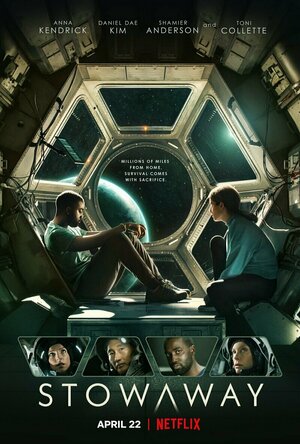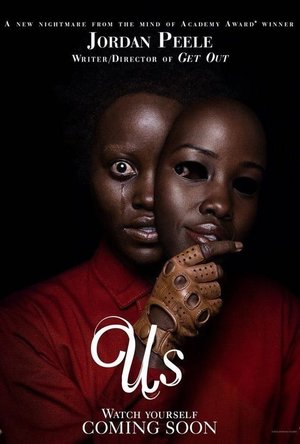
Tom Stringer: A Global View
Book
Tom Stringer is a prolific and highly regarded United States based interior designer whose work...
BankofMarquis (1832 KP) rated The Gentlemen (2020) in Movies
Jun 27, 2020
Following up to his surprise strong Directing turn in the live action ALADDIN remake (if you haven't seen this film, the BankofMarquis strongly recommends you do), Ritchie returns to his "British Gangster" roots with the violent, funny and original THE GENTLEMEN.
Starring Matthew McConaughey as a U.S. born and bred, Cambridge educated hustler who becomes king of the British Marijuana scene who is looking to get out of the business, THE GENTLEMEN tells the tale of the...ahem...gentlemen that are pursuing (both legitimately and illegitimately) his empire.
The way that this film is constructed, the most essential casting of this film is that of the central character of Michael Pearson. He is billed as an enigmatic, charismatic, violent and brilliant legend of the British drug trade, so Ritchie needed someone with all these qualities to inhabit that role. Fortunately, with McConaughey, Ritchie finds his man (I'm sure the backstory of this character needed to be tweaked a bit upon this casting to explain why an American is the king of British Weed). McConaughey is at his laconic best in this role, bringing star quality - and star power - that holds the center of this film together well.
He is joined by a strong cast that understands the type of film they are in and are game to join in on the (violent) fun. Michelle Dockery (DOWNTON ABBEY), Henry Golding (CRAZY, RICH ASIANS) , Jeremy Strong (THE BIG SHORT) and the always watchable Eddie Marsan (THE WORLD'S END, amongst others) all are strong in the limited moments that their characters are allowed to shine, but with McConaughey and 3 other actors I will speak to in a moment, they are relegated mostly to the background.
This is because Hugh Grant (4 WEDDINGS AND A FUNERAL), Colin Farrell (PHONE BOOTH) and (surpisingly) Charlie Hunnam IPACIFIC RIM) almost steal the film from McConaughey, Each one of these characters could have easily been the centerpiece of their own film and I would be happy if Ritchie would spin one of these characters off.
Credit, of course, for all of this has to go to Ritchie who wrote and directed this film I was pleasantly surprised by the cleverness and inventiveness in storytelling and style as well as the restraint that Ritchie shows in the violence. He uses it (somewhat) sparingly and well, so the violence punctuates the action.
All-in-all a fun (though violent) time at the movies.
Letter Grade: A-
8 stars (out of 10) and you can take that to the Bank(ofMarquis)
Bob Mann (459 KP) rated Stowaway (2021) in Movies
Apr 30, 2021
This is problematic. The ship was designed for two (with the specs pushed for three - - ed: really???!). With oxygen levels depleting, the crew are left with some difficult decisions to make.
Positives:
- For once, I have no issues with the physics of this sci-fi movie! As a PhD physicist by training, you will generally hear me huffing and puffing in sci-fi movies about loud noises in space; implausible decompressions; and the like. But here, I really liked the design of the spaceship and its implementation of artificial gravity. No massive and wasteful 'wheel' construction as in "2001: A Space Odyssey" here. Just units on the ends of a sufficiently long tether to get the right G.
- Equally - again physics related - the 'climb' and 'descent' scenes are nicely executed.
- Toni Collette adds gravitas to the (otherwise OK) cast. Shamier Anderson is also good in his emotional scenes. And the ensemble works well enough together.
Negatives:
- The screenplay is so vanilla and linear in its storytelling that you could ask me what happened in this movie in six months time and I think I would struggle to answer. When the 'stowaway' was discovered, my mind went crazy with options: was he there by accident? (which I don't think can strictly be defined as a "stowaway"); had he smuggled himself on-board deliberately?; did he have nefarious intentions towards the crew or the mission?; when push came to shove, would the 'short-straw' candidate fight back? Literally NONE of this was explored. True that we have a "will they survive" story, as the oxygen depletes, but this has been done much better in films like "Apollo 13" (with CO2 instead of O2).
- Sorry. I've never been a fan of Anna Kendrick. She's fine in fluffier fare like "Pitch Perfect" and "A Simple Favor". But as the brave and all action heroine here, I didn't buy it.
- Why have Toni Collette in a movie if you are going to give her so little to do?
Summary Thoughts on "Stowaway":
I've seen a number of extremely positive reviews of this one, which I've found a bit mystifying. I really like Sci-fi films, and particularly space-based sci-fi flicks. But this was all very "meh" for me. The premise was full of potential, but failed to deliver on much of it.
(For the full graphical review, please check out the review on One Mann's Movies here https://bob-the-movie-man.com/2021/04/30/stowaway-bland-and-forgettable-sci-fi-fare/. Thanks.).
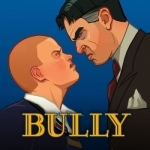
Bully: Anniversary Edition
Games
App
***PLEASE NOTE: This game is officially supported on the following devices only: iPhone 5, 5s, 5c,...

Dora and Friends HD
Education and Games
App
Get ready to create big adventures with Dora and Friends, Nick Jr.’s newest show! It’s time to...
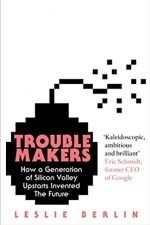
Troublemakers: How a Generation of Silicon Valley Upstarts Invented the Future
Book
THE GRIPPING TALE OF THE EARLY FRONTIER DAYS OF SILICON VALLEY FROM ACCLAIMED HISTORIAN LESLIE...
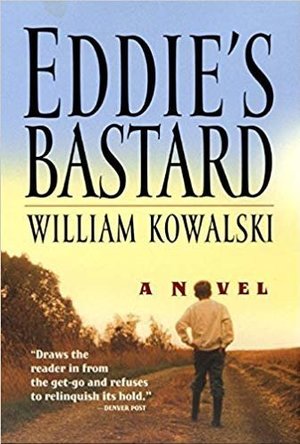
Eddie's Bastard
Book
In this rich, deeply resonant literary debut, twenty-eight-year-old William Kowalski explores the...
fiction literary fiction contemporary American
What a great film “Get Out” was. Jordan Peele’s classic which unpeeled (sic) race relations in a wholly novel and horrifying way. Yes, the story was a bit ‘out there’ and unbelievable, but he pulled it off with great chutzpah.
With his follow-up film – “Us”…. sorry but, for me, it just didn’t work.
From great beginnings
It all starts so promisingly. Young Adelaide Wilson (a fine debut performance by Madison Curry) is on a seaside holiday with her mother and careless father when she wanders onto the deserted Santa Cruz beach at night. There sits, like some gothic horror ghost train, the Hall of Mirrors. “Find Yourself” it taunts. She makes the mistake of entering and changes her life forever.
Spin forwards 30 years and Adelaide, now a married mother of two, is back in Santa Cruz with a terrifying feeling that things are about to go pear-shaped. And of course they do!
Why oh why oh why those voices?
This film had me gripped until a particular point. Having people stand still and silent at the end of your drive is an incredibly spooky thing to show. But then, for me, the wheels came off big time. The “reveal” of who these people were I could take. But the manner of their behaviour and – particularly – how they talked was horrifying; and not in a good way. When “Red” started speaking I couldn’t believe my ears: Joe Pasquale after swallowing Donald Duck.
From there, the film became farcical for me, descending in progressive stages to a tunnel-based apocalypse: a plot element that was just so paper thin it bore no scrutiny at all.
This was, no doubt, an attempt at a satirical dig at the class structure of America (“We are Americans” adding a double meaning to the name of the film). If it had been played as a deliberate comedy farce it might have worked. But otherwise no.
Flashes of Peele brilliance
This is not to say that there are not positives in the film. The excellent Lupita Nyong’o gives the whacky material her all, and the other adult female lead – Elisabeth Moss (from TV’s “The Handmaid’s Tale”) – is good value as Kitty Tyler: a diabolical incarnation in either form!
Peele also delivers flashes of directorial brilliance. The “hands across America”, disappearing into the sea, is a sight that stays with you. I also liked the twist at the end, although in retrospect it’s difficult to relate it to the rest of the story and strikes of desperation in the storytelling.
Overall, a big disappointment
I know there are some who really like this movie. Each to their own, but I was not one of them. After “Get Out” I was hoping for something much better. I hope that was just Jordan Peele’s “difficult second album”.
Purple Phoenix Games (2266 KP) rated Chronicles of Crime: 1400 in Tabletop Games
Oct 21, 2020
Chronicles of Crime: 1400 (which I shall shorten to 1400 for the duration of this preview) is an app-assisted campaign, murder-infested, cooperative storytelling game for one to four players. If you are familiar with the original Chronicles of Crime, you already know how to play 1400. However, should ye be of the uninitiated, allow me to set the stage for this incredible gaming experience.
DISCLAIMER: We were provided a copy of this game for the purposes of this review. This is a retail copy of the game, so what you see in these photos is exactly what would be received in your box. I do not intend to cover every single rule included in the rulebook, but will describe the overall game flow and major rule set so that our readers may get a sense of how the game plays. For more in depth rules, you may purchase a copy online or from your FLGS. -T
To setup, place the Evidence Board in the middle of the table and the Home Location Board near. Keep all the decks of cards nearby (shuffled or unshuffled, whatever is your liking) as well as the alphabetically-labeled Location Boards. Fire up the Chronicles of Crime app, choose “1400,” and then choose the case you would like to play. The app will walk players through the additional setup steps for the case being played. For this solo preview I played through The Missing Pages case. Also, to be completely upfront I got a 95/110 for a final score, but no big deal.
How do I explain this game succinctly? Well, each of the cases will involve players traveling to different Location Boards and meeting Characters at these locations. Many cases will be involving several Special Items and, new for the 1400 version, Vision Cards that may assist players in putting the case into focus. These Vision Cards do not really give the story away or anything, but are merely a vague framework of possible factors.
By using the app and scanning the QR codes on the boards and cards players will be learning about the case, viewing the scene of the crime(s), inspecting items, chatting up locals for information, and also new for 1400: consulting with the goodest boi dog companion! The dog, Perceval, assists the knight (the players) in cases by sniffing items. A word of caution, though, when you play this game do NOT have Perceval sniff any items until you are completely done with a location because he may drag you to another completely different location right away before you were ready. Not that it happened to me, mind you… okay, it did.
Play will continue not so much in “rounds” but until the players have enough evidence and a good handle on the situation enough to return Home to report to their family members all the details of the crime(s) by scanning answers to their questions about the case. The app then assesses the accuracy of the answers and outputs a score. For reference, though I did receive 95/110 on my first play of 1400 I did only receive a 70/100 on my first runthrough of the original Chronicles of Crime, so playing this style of game several times seems to improve how one plays.
Components. As most items in the box of the game are card or cardboard-based, and all really great quality, I will speak on other component items. Firstly, the art and art style throughout the game is simply stunning. I mean look at that Perceval card! And I already raved about the box cover in my opening statement. This art really speaks to me and it says, “I’m gorgeous.”
The app. I have only great things to say about the app. It’s the same app that you would use for original Chronicles of Crime, and operates the exact same way. For me it has been flawless to use and just a joy to bring technology into the gaming world, even for a game set in the year 1400. I am obviously no purist game enthusiast, as I enjoy these hybrid model games. Once you play with the app you will see how ingenious a system it really is. The app coupled with the nondescript cards and other components in the game make for infinite storytelling possibilities that can only be limited by creativity and time constraints. I love the components in the box AND the marvelous app.
Gameplay for me is also just glorious. I love being able to sit down, setup the game, and let the app tell me what’s going on. So what should I do first? Oh, let’s mosey on down here to this Location Board and drum up some information. Ooh I found an Item! I should bring it back to my Family Location Board and ask my merchant sister about it. Hmm, it’s religious in nature? Okay then, my Monkle (monk uncle) will know something about it. Okay, time to go back to that location and speak with the other person who was in there. OH CRAP, I wasted too much (in game) time and now that other person is gone?! Uh oh, I better stop messing around here…
It’s just amazing, and I love this family of games. I am so stoked to delve more into 1400 and discover more shenanigans happening in Paris. Perceval and I are out to solve all the cases and beg for more. If you are looking for a game that uses a hybrid board game/app model, are a fan of this era in history, or just want to have a really great experience playing a game, I urge you to consider Chronicles of Crime: 1400. It has everything I love in a unique game and I just can’t get enough!
